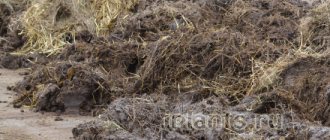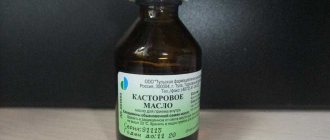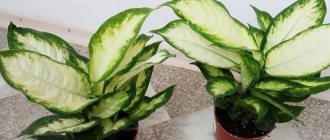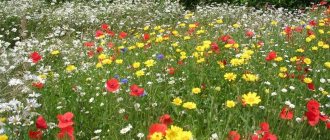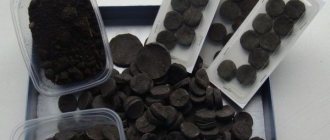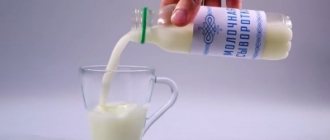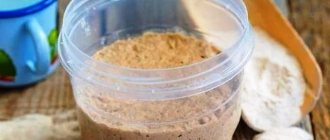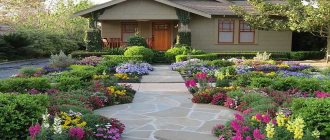After burning organic matter (firewood, last year's grass, cut branches, etc.), a non-combustible residue remains - ash. It contains mineral salts and many valuable substances that can be absorbed by plants. Fertilizing with wood ash enriches the soil with potassium and phosphorus salts - two of the 3 elements most necessary for plants.
Feeding with ash. The illustration for the article is used under a standard license ©ofazende.ru 618
What ash should not be used in the garden?
First of all, you need to pay attention to the mineral composition of this fertilizer. Not all ash is useful, as it differs in its composition. It depends on the initial raw materials that were used for its manufacture. Typically, gardeners use the ashes that remain after burning unnecessary garbage. However, the raw materials do not always contain the necessary components to create the correct ash that can fertilize plants.
What ash should not be used in the garden:
- For example, young trees and shoots contain a lot of potassium. Rotten wood contains large amounts of calcium. There are raw materials that are absolutely unsuitable for producing ash. You can highlight old newspapers, magazines, printed materials, plastic items, clothes, shoes.
- The composition of magazines is harmful not only to the compounds used to make the paint, but also to the gloss itself. When shiny paper is burned, the substance dioxin is released, which will poison plants for several years after being added to the soil. Be sure to remove old newspapers and magazines. Young tops are also not suitable, since they contain a large amount of harmful mineral impurities that should not be in the ash. When burned, plastic products release large amounts of heavy metals and toxic substances that will spoil the composition of the soil.
- Under no circumstances should ash be used if it was obtained by burning old boards coated with varnish or paint. They contain heavy metals and harmful components. Such ash cannot be disposed of when fertilizing beds; it must be thrown away. Please note that it is possible to produce ash that is rich in a certain amount of minerals. For example, most phosphorus is found in potato tops, and potassium is found in sunflower stems.
Field work
General information
Wood ash, as a fertilizer for the garden, has been used for quite a long time and with great success. Essentially, fertilizer is residual material of mineral impurities formed during the combustion of wood and plant materials.
In appearance, it is a light gray powder with inclusions of a small number of small, charred firebrands that have not completely burned through. The drug is prepared by burning raw materials in metal tanks or in pits specially dug for this purpose.
In addition, the drug has a well-balanced composition, can be used on all types of soil and is safe for human health and the environment. It can be harvested at any time, as healthy plant material accumulates. The shelf life of ashes is practically unlimited.
What fertilizers should you not mix ash with?
Ash is a component that is not allowed to be mixed with all fertilizers. Due to its rather broad and rich mineral composition, the microcomponents contained in it can enter into a chemical reaction with elements contained in other organic fertilizers.
What fertilizers should you not mix ash with:
- Under no circumstances should ash be mixed with ammonium nitrate . The fact is that some alkali metals, such as potassium or calcium, react with ammonia, releasing substances that are not soluble in the soil. The effect of ammonium nitrate is reduced or completely eliminated. Therefore, approximately 2-3 weeks should pass between feedings. It is not worth using fertilizer at the same time by mixing these components.
- There are a huge number of fertilizers that react chemically with ash. Among them, it is worth highlighting nitrogen mineral fertilizers . That is, those that contain ammonium, ammophosphate or ammonium nitrate. When these components are mixed, a chemical reaction occurs, as a result of which insoluble precipitation may form and active nitrogen evaporates. Plants do not receive a vital component. To minimize the release of nitrogen, the soil is sprinkled with a thick layer of peat, or the soil is cultivated to form a crust. This prevents the release of nitrogen gas into the atmosphere. It is best to apply these fertilizers separately.
- Superphosphates. These fertilizers contain nitrogen and phosphorus. When ash and nitrogen interact, it turns into a gaseous state and evaporates. The ash contains a large amount of phosphorus, but there is also a lot of it in superphosphate; you can overdo it with this component. Accordingly, the additive will not be useful, but harmful. It is believed that ash can be mixed with double superphosphates, but the percentage of the alkaline component should be no more than 7-8%.
- Bird droppings and mullein. These are organic fertilizers that contain nitrogen. Accordingly, if you mix these components, nitrogen will go into a gaseous state and evaporate. Therefore, it is best if the frequency of fertilization with components is one to two weeks.
Fertilizer
Rhododendron
It is believed that he is unpretentious and can endure anything. But such a simple remedy as ash can easily destroy a bush. More precisely, when adding ash, rhododendron runs a high risk of developing chlorosis. This disease is characterized by the fact that it interferes with the processes of photosynthesis. And it is important to emphasize that rhododendron, in principle, does not like mineral fertilizers, especially potassium fertilizers, which stop applying in July.
When to add ash, in autumn or spring?
There is a period when it is best to fertilize with wood ash. Depending on the time of year and month, growth and the need for certain nutrients differ.
When to add ash, in autumn or spring:
- It is best to apply nitrogenous fertilizers, such as ammonium nitrate, in the spring. It is during this period that plants need the active formation of juices and green leaves. In summer, it is best to use fertilizers that contain large amounts of potassium and phosphorus.
- Fall is the ideal time to apply fertilizers high in potassium and calcium. Among them it is worth highlighting ash. Therefore, it is best to apply this fertilizer not in the spring, but in the fall, after the harvest is harvested. During the winter, it can be changed and is better absorbed, changing the composition of the soil for the better.
- Not all plants need to be fertilized with ash, as they prefer acidic soil. Ash alkalizes the soil, increasing its pH. Thus, it is necessary to control the acidity of the soil from time to time. If it is more than 7, then there is no need to apply fertilizer in the form of ash.
- An alkaline environment is harmful to plants and significantly reduces their growth.
Treatment
Benefits for plants and soil
It is no coincidence that wood ash has been loved by gardeners and gardeners since ancient times. She:
- loosens the soil structure;
- reduces acidity;
- contains macro- and microelements in a plant-friendly form;
- creates a favorable soil environment for the development of microorganisms;
- disinfects the soil, destroying fungal spores;
- improves the quality of compost;
- allows you to effectively combat different types of pests and plant diseases.
What vegetables cannot be fertilized with ash?
Some crops like acidic soil, and adding ash makes it alkaline. Therefore, under no circumstances should you use ash to fertilize some vegetables.
Which vegetables cannot be fertilized with ash:
- Radish
- Sorrel
- Spinach
- Rhubarb
Radishes are a crop that loves medium-acidic soils that are loose. It is best to treat with ash a year before planting the crop. If you fertilize the soil in which radishes grow with ash, you will get yellow leaves, small root vegetables, and a large number of arrows. The harvest will be very poor.
Rhubarb also prefers to grow in soils that are slightly acidic. You will not get a full harvest and seeds. Please note that even those plants that respond well to fertilizing with ash should not be fertilized with this component if premature shedding of leaves is noticeable, the fruit becomes bitter, and the soft part of apples and pears turns brown.
Ash
Alarming symptoms
Indications for use of the drug during the season are:
- Withering and shedding of leaves in the vineyard;
- Premature spoilage and rotting of fruits on garden trees;
- Blackening of tomatoes;
- Strawberry molding;
- The appearance of signs of fungal diseases (rot, powdery and downy mildew, etc.), as well as pests (ants, slugs, Colorado potato beetles, etc.) on foliage and young shoots.
You should also respond to symptoms indicating oversaturation of the soil with ash:
- Tomato tops dry out quickly,
- The foliage of rose gardens suffers from chlorosis,
- The fruits of apple and pear trees darken and acquire an unpleasant bitter taste, etc.
Let us consider in more detail the question of which plants can be fertilized with ash, which will help every beginning summer resident decide on the optimal list of preparations for his plot of land, and grow a healthy, strong harvest of fragrant, juicy, ripe fruits.
What flowers cannot be fertilized with ash?
Ash should not be introduced if the soil is saturated with a large amount of calcium. This can be detected by excessive growth of leaf rosettes, dying off of tomato shoots, and the appearance of white spots on the leaves of various crops. It is best to apply fertilizer in small quantities when growing seedlings. Under no circumstances should you apply urea and complex nitrogen fertilizers at the same time. This can lead to plant death.
Which flowers cannot be fertilized with ash:
- Among indoor plants, a large number of crops love acidic or slightly acidic soils. Accordingly, ash cannot be used in this case.
- Azaleas, hydrangeas and gardenias love acidic soils. Slightly acidic soil is preferred by orchids, violets, dieffenbachias, and dracaenas.
- These plants are allowed to be fed with ash once a year. Frequent use of this additive will lead to withering of the shoots.
Application
Hydrangea
This flower “loves” acidic soil - it is not only planted on it, but also periodically fed with special acidifying solutions during the summer season. The use of ash in a flower garden with hydrangea before the formation of buds leads to pale and short flowering, and after flowering begins, to a weakening of this perennial as a whole, as a result of which, theoretically, the hydrangea may not survive the winter.
How to properly dilute ash for feeding?
Mixing organic and inorganic fertilizers is not recommended not only because of the chemical reaction, but because they differ in function. Ash works best when applied to the soil in the fall.
How to properly dilute ash for feeding:
- It is often applied in the second half of summer, in August, when the fruits ripen. Manure and droppings are usually added to the soil first to promote the development of stems, leaves, and green mass. Please note that ash is best mixed with compost and herbal decoction.
- These components do not react with each other and have similar properties. Usually, for 10 liters of water, take a glass of nettle and a glass of ash. The components are thoroughly mixed and the crops are watered. An average liter is consumed per bush. This fertilizer is best suited for tomatoes, cucumbers and peppers.
- This fertilizer is best applied to the soil if you are planning to dig up your garden, or before watering. Prolonged exposure of the component to direct sunlight contributes to the volatilization of calcium. That is why it is necessary to sprinkle fertilizer on the soil to prevent changes in the composition of the nutrient mixture.
- It is best to prepare a special solution. To do this, you need to pour a bucket of ash into a large barrel. If a small amount of fertilizing is needed, you need to pour about a liter of the component into a large container and pour in 20 liters of water. The container with fertilizer must be covered with a cloth and left in the sun, stirring regularly for 3 days. After 3 days you need to add a small amount of water again. The ratio of the prepared solution to water should be 1:1. Only after this is it allowed to water.
Dry ash
Optimal schedules
When it comes to the question of how to fertilize with ash, experienced summer residents and amateur gardeners adhere to the following fertilizing scheme:
- The first application is provided in early spring before arable land for light, loose sandy loam and sandy soils and during autumn digging for heavy loams. After the snow cover has melted and the temperature optimum has been established at +5 ° C, the drug is scattered over the surface of the earth at a rate of 150-180 g per hundred square meters.
- Repeat the procedure when planting plants in open ground, mixing the substance with the main soil along the planting furrow or in each planting hole.
- Approximately 21-30 days after the young shoots have strengthened, spray on the leaf, diluting 0.25-0.35 kg of ash in a bucket of water and, after thoroughly stirring, use immediately. Repeat the procedure every 14-21 days throughout the season.
Experienced gardeners advise using wood ash as a fertilizer for seeds and seedlings, which stimulates germination and activates the development of tomatoes, eggplants, cucumbers, zucchini, cabbage, etc. To do this, prepare a stock solution from a kilogram of the substance dissolved in a standard bucket of water. After thoroughly stirring, the mixture is kept for 48-72 hours in a dark place and the composition is used for soaking seeds for several hours or overnight, or for root feeding of seedlings, 50-100 ml per bush.
Why can't ash be diluted with water?
It is believed that it is best to pour this fertilizer with boiling water. This allows all components to dissolve, turn into ions, and be better absorbed inside the soil. You need to pour two glasses of fertilizer into 10 liters of boiling water and leave for about 7-10 days. This solution is rich in mineral components and should be used to feed the roots. It is best not to get fertilizer on exposed roots. Freshly prepared solution must be used immediately.
Why ash cannot be diluted with water:
- Immediately after dissolution, you will find that not all the ash has turned into a liquid state, and there is sediment at the bottom. If there are a lot of solid particles, then the ash contains a lot of phosphorus. After all, this fertilizer contains an insoluble component containing phosphorus.
- It is necessary to apply the solution under the bushes, after mixing well, so that a suspension of insoluble phosphorus precipitate appears in it. If a small amount of insoluble sediment remains at the bottom, do not throw it away. It is allowed to add a small amount of water and distribute evenly under the bushes.
Treatment
Benefits of use
When using the drug in their garden plots, many gardeners note a significant positive effect:
- Soil pH is adjusted;
- The supply of many nutritional components of the earth is replenished;
- Plant immunity is strengthened;
- Increases resistance to frost in heat-loving crops;
- Stimulation of the development of botanical crops due to an improved metabolic process and activation of photosynthesis;
- The processes of formation of ovaries and the timing of fruit ripening are accelerated, their taste and commercial properties are improved, etc.
In addition to its direct purpose, ash as a fertilizer is often used as a powerful fungicidal and insecticidal agent. The drug contains unique phenolic compounds and special odorous substances that can effectively repel pests and counteract the development of pathogenic microflora. The alkaline nature of ash has a detrimental effect on the proliferation of mold and putrefactive fungi, which significantly inhibits their appearance on plants.
Can wet ash be used?
Under no circumstances should you use wet ash. It often rains after picnics, but experienced gardeners are in no hurry to throw away wet fertilizers. However, it is worth remembering that the fertilizer contains calcium carbonate, which is a soluble substance.
Is it possible to use wet ash:
- All the calcium that was in the ash goes into the soil in the place where the fertilizer was exposed to rain.
- Wet ash contains very little useful calcium.
- That is why it is recommended to use hot water, and not leave the ash for a long time in open sunlight to expose it to rain.
Top dressing
Compound
For good yields, it is necessary to create optimal conditions; you cannot rely on chance and think that crops can be grown in any area
Those who work in the agricultural industry know how important it is to fertilize the soil so that it provides nutrients to the plants. There are many different products on the market today with similar characteristics.
However, we can name the most budget-friendly fertilizer option, which has been used for many years. We are talking about ash, which contains more than thirty minerals that help plants develop properly.
Ash easily makes the soil loose so that the root system of plants can develop without problems. This natural fertilizer is based on organic matter. During the burning of vegetation, taking into account its varieties and other characteristics, the composition of the fertilizer elements can be changed. However, we can name general indicators that are available in any organic substance. The main components of ash are Ca, K, Mg, Na. Plants without these elements do not bear fruit, and the ash will help saturate the earth with such essential substances. For example, calcium carbonate is needed to carry out metabolism and accelerate tissue growth. The product will be useful for flowering plants. Calcium silicate helps absorb vitamins.
For the growth of vegetable and fruit crops, an important component is calcium chloride, which is present in the ash. Thanks to it, enzymes are formed that promote photosynthesis and transport of nutrients
In addition, winter hardiness will be increased, and immunity to diseases and rot formation will be strengthened. All the microelements that are in the ash help protect against the negative influences of the environment, improve the condition of the soil and have a positive effect on the development of plants.
Ash fertilization: reviews
Experienced gardeners have long figured out how to properly use ash for fertilizer. Below you can read reviews from people who have a summer cottage.
Fertilizer with ash, reviews:
Eugene . I try to use only fertilizers that I can get myself, because I am a pensioner and I don’t have the funds to purchase expensive components. Often, in order to improve the quality of the soil, I use ash, manure, mullein or chicken droppings. The last time I used ash was canopy. I brought it in while digging up the garden. I can say that this technique worked, and in the spring I got strong stems of cucumbers and tomatoes. Now I will always use this component exclusively in the fall.
Oksana . I am a completely inexperienced gardener, and I thought the more the better. Therefore, I added dry ash under each tomato bush. Soon the leaves began to turn yellow and fall off. Later, gardener friends explained that it is better to add this component in the fall rather than in the spring.
Veronica. Potatoes, tomatoes and cucumbers grow in my garden. This year I decided to plant radishes. I did everything as usual, but got a very bad harvest. The root crops turned out to be small, the tops quickly turned yellow. I fertilized radishes with ash, it turned out that the crop loves acidic soil, and the ash alkalizes it. I was very upset because I used soil and didn’t get a good result.
Fertilizer
If you are into gardening, we recommend reading the articles on our website:
- Planting, picking and growing eggplant seedlings at home
- Planting and growing tomato seedlings at home: methods
- Weeds in the garden: varieties, names, control methods
- Green manure mustard - when to sow and dig: recommendations for a gardener
In dry form, this fertilizer is used uneconomically, so experienced gardeners recommend using the method of dissolving in water.
Cheat sheet for beginners
For those who do not have specialized equipment, recalculation of raw materials is provided:
- Teaspoon – 2.5 g;
- Tablespoon – 6.5 g;
- Matchbox – 11 g;
- Standard faceted glass – 110 g;
- Half-liter jar – 0.25 kg;
- Liter jar – 0.5 kg.
Fertilizer ash is a source of many useful components. The use of this substance in the garden is entirely justified. Obtaining the drug does not require financial investments, and anyone can cope with the procedure. At the same time, the technology for introducing ash into the ground is not difficult, and the plants respond to feeding with gratitude, delighting the owners with a bountiful harvest.
Sorrel
The plant prefers moist, neutral and slightly acidic areas. Sorrel is grown only in such conditions, otherwise the leaves will become coarse due to an excess of oxalic acid.
Excess ash fertilizer leads to growth stagnation and lack of seeds for further reproduction.
Summer residents are accustomed to scattering ash from the barbecue and stove over all the beds, but this harms those plants that do not like alkaline soil. A reasonable approach to farming will eliminate many problems in growing a good harvest.
- Author: iarriba
Rate this article: (0 votes, average: 0 out of 5)
Potato
Unfortunately, ash is often presented as a universal super remedy - it replaces store-bought potassium fertilizers, increases productivity, and contributes to an increased content of starch in tubers. But all this is true only for potatoes grown in acidic soils. Whereas when adding ash to potatoes on neutral soils, the pH may shift above 5.5, as a result of which the risk of developing a disease dangerous for potatoes such as scab increases.
